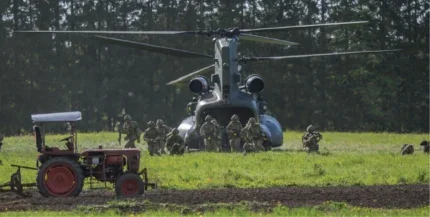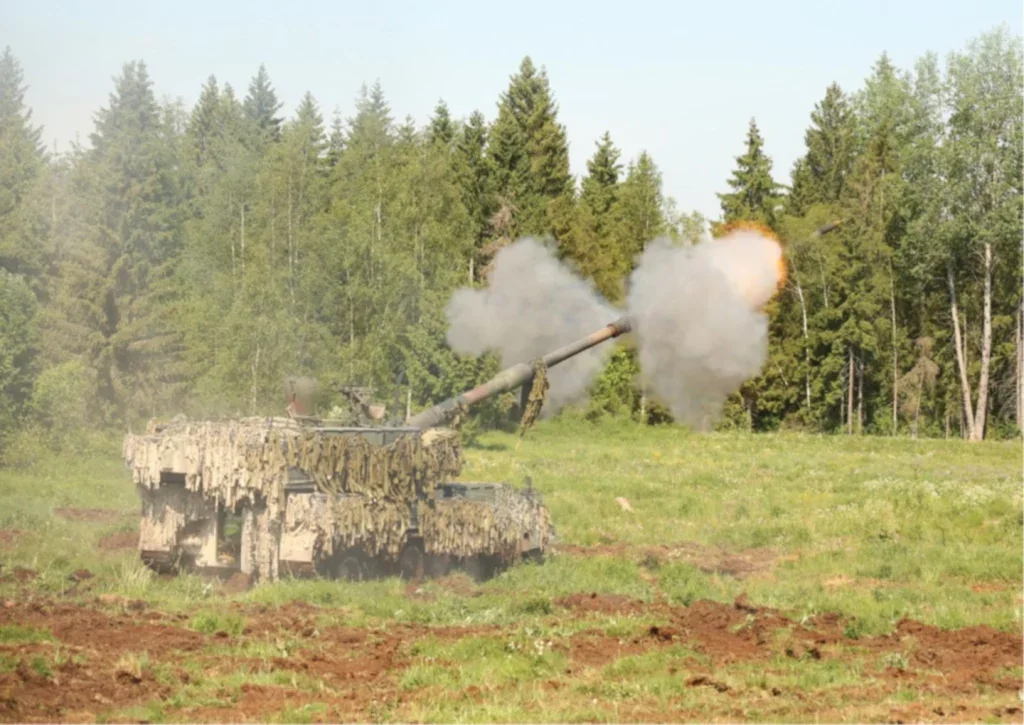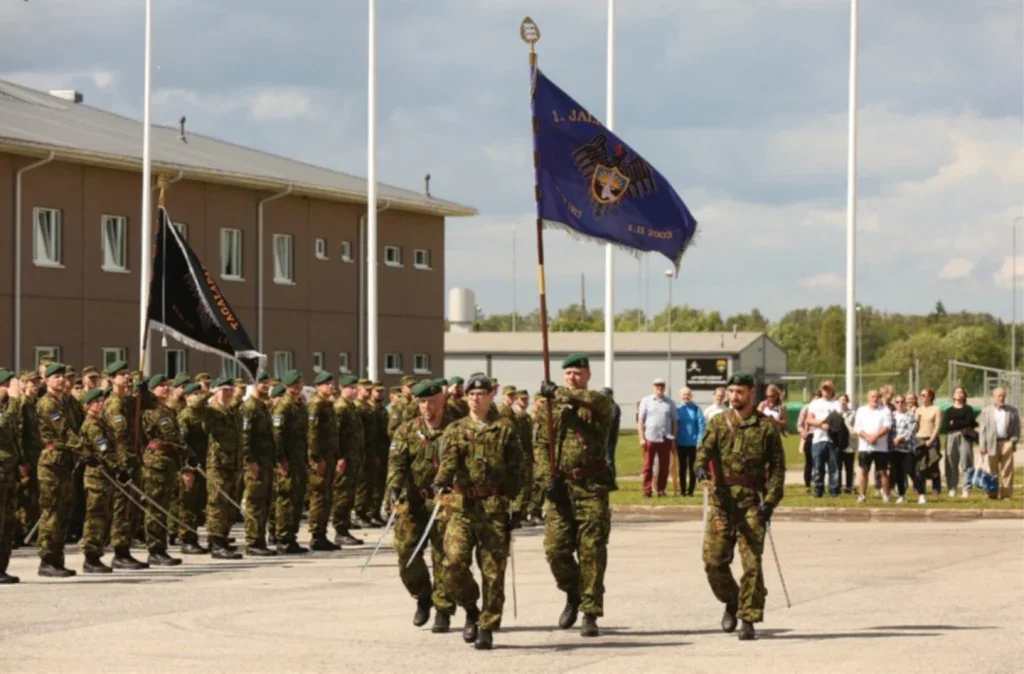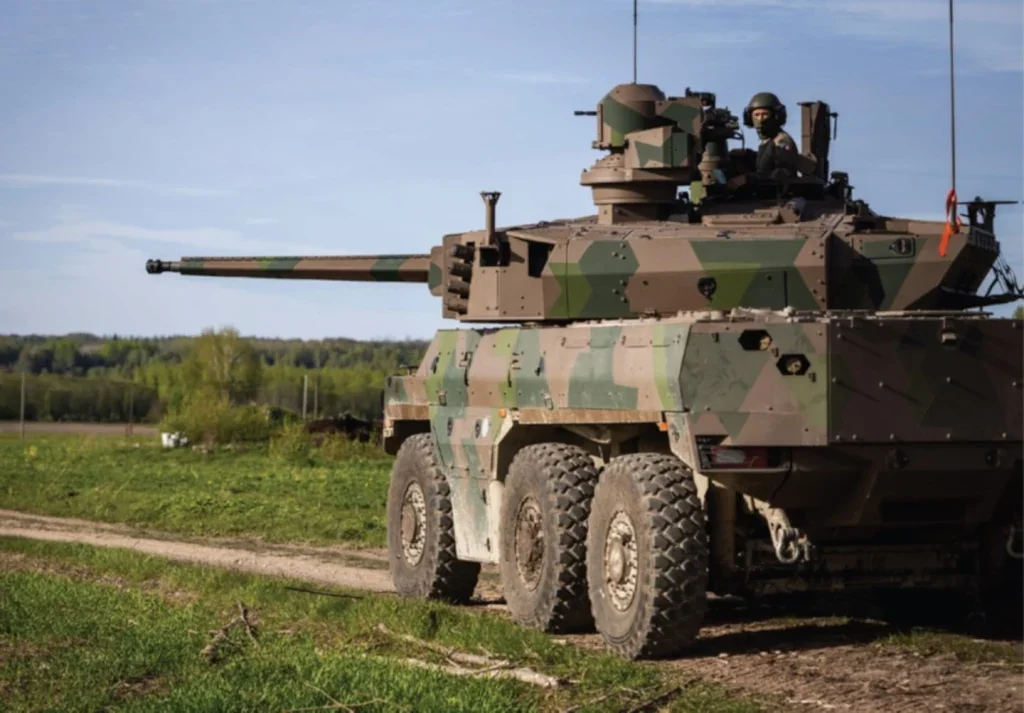
All things considered, the Baltic States had a tough last century. They began it under Tsarist rule, facing strikes and riots and the cold grip of the Okhrana. Then, for a precious few years after 1918, they tasted independence for the first time – but it wouldn’t last. By 1940, the Soviets had invaded. A year later, the Nazis did too. Then, by 1945, the Soviets appeared again, and this time would stay for the next five decades. Alongside the hammer and sickle invariably came the gulag and the NKVD. In tiny Estonia alone, Stalinist rule saw 35,000 people deported over the course of just eight years.

Nowadays, of course, the Baltic States are free, prosperous democracies on the frontiers of Europe. But given their unhappy history with the Russian bear – and Vladimir’s Putin shocking invasion of Ukraine – the spectre of Russian tyranny unsurprisingly looms large. “From the very moment we regained independence, we have been working on and investing in our own defence capabilities,” emphasises Colonel Mait Müürisepp, commander of the Estonian Division in the Estonian Defence Forces, adding that his compatriots have “never underestimated” the threat Russia poses both to its immediate neighbours – and the broader European family. If that doubtless makes sense in theory, the question remains: how? How, when faced, with a vast Eurasian rival to their east, should the miniscule Baltic States protect themselves? Speak to Müürisepp, and the answer is multifaceted. Since 2004, when Vilnius, Riga and Tallinn all joined the alliance, Nato has obviously been important, with Article 5 a looming consideration right across the region. Not that American firepower is all that matters here. On the contrary, and especially since US dedication to European defence seems increasingly suspect, the Baltics are equally relying on their own defence – and ultimately their own sense of patriotism too.
Looking east
For a range of reasons – historical, demographic and geographical – defence has long been of central importance right across the Baltic States. In Estonia, to give one example, a form of conscription was instituted shortly after the country regained its independence in 1991, even as Latvia and Lithuania have gradually ramped up their national defence budgets too. As Müürisepp says, all this has transformed the readiness of local militaries. “Some of my senior colleagues have noted that in the beginning of the 1990s, the Defence Forces soldiers had the absolute will and mental readiness to defend, but very limited training, resources and capabilities. We are lucky in a way – the will to defend is still there, but the training and capabilities are way beyond the possibilities we could imagine, for example, in 1993.”
To a certain extent, then, Müürisepp suggests that “nothing” has changed since Russia’s 2022 invasion of Ukraine, with his homeland as aware of its own defence as ever. All the same, you get the sense that news from the south has really focused minds. That’s perhaps clearest when it comes to the atrocities visited upon the Ukrainian people. From one-off slaughters near Kyiv, to the grinding terror of occupation beyond the Dnipro, Baltic politicians are under rising pressure to preserve their own sovereignty. “When we see Bucha, Irpin, civilian buildings destroyed,” remarked the Lithuanian foreign minister recently, “we think about our cities, we think about our people.”Quite apart from the demands of the Baltics themselves, this shift is also clear from the language of Western allies. In June 2024, to give one example, Olaf Scholz reiterated that Nato would defend “every square inch” of its territory.
Such rhetoric may sound obvious, but in fact it marks a shift from earlier plans. As recently as 2022, after all, Nato strategy seemingly tolerated the initial occupation of the Baltic States, with Western armies arriving 180 days later to relieve them. For Kaja Kallas, Estonia’s then-prime minister, that essentially condemned her country to being wiped off the map until the US could rouse itself, a strategy with predictably grim consequences for Estonia and her people.

This fairly relaxed approach, at any rate, is no longer tenable in a post-Bucha world – evidenced by a greater Nato push to robustly defend the Baltics in the immediate aftermath of a Russian attack. In 2023, to give one example, a summit at Vilnius saw the unveiling of new plans that allocate land, air and sea roles to specific units in specific areas. At the same time, all three Baltic States have been pushing their partners to commit to a permanent military presence in their territory, with Müürisepp broadly satisfied by the progress so far. “After the start of the Russian war of aggression against Ukraine,” he says, “Nato has regained a realistic understanding of the Russian threat and has updated its defence plans accordingly.”
69
The number of years in the 20th century that Estonia endured under foreign rule.
European Commission
Practical defence
Yet if the Baltic States seem reassured by a rampingup of Nato commitments in theory – and a change of plans in practice – they still need to contend with the intractable geography of their countries. Think about it like this: the Russian border with Estonia, on the River Narva, is just 50km from Tallinn. That obviously makes defence in depth difficult, especially when you recall that Russian Kalilingrad and its ally Belarus essentially mean the Baltics are surrounded by enemies from three sides. No less important are the broader geopolitical pressures. In February 2024, for instance, Donald Trump infamously stated that Russia could “do whatever the hell they want” with any Nato member not pulling its weight. To be fair, the Baltic States aren’t really in this camp, particularly given they now spend far more per capita on defence than places like Italy or Spain. All the same, and especially when Washington is distracted in the Pacific and Middle East, it’s easy to see how the Baltics may feel they can’t rely on Nato forever.

600
The number of bunkers planned for the Estonian segment of the Baltic Defence Line.
Foreign Policy Research Institute
Certainly, alongside pushing for greater alliancewide solidarity, the Baltics have equally been busy looking to their own defence. That’s clear enough when it comes to labour, with Estonia boasting reservists and a volunteer ‘Defence League’ alongside a professional army. “In total,” Müürisepp says, “approximately 230,000 individuals with military obligations are registered in the mobilisation registry, representing nearly 20% of the Estonian population.” From there, Estonia and her neighbours are developing defences for these soldiers to man – a wise decision if they hope to stop eastern invaders in their tracks. A clear example of this strategy is the Baltic Defence Line. Announced in January 2024, the aim is to comprehensively protect the frontiers of all three Baltic States from Russian or Belarusian assault. In Estonia alone, that means building around 600 bunkers, alongside storage areas and anti-tank ditches.
Given how important drones have proved in the Ukrainian context, the Baltics are also investing in air defences. Key here is the so-called ‘drone wall’, unveiled by all three Baltic States in May, and which hopes to blanket sensitive border areas in UAVs. Supported by central government, local defence industries are ramping up too: among other things, the Estonian government is planning a military industrial park spanning up to 100ha. Beyond the practical utility of these schemes, moreover, Müürisepp is also keen to highlight their deterrence value. “It is not only about being ready,” he says, “but being ready first; not about how credible we ourselves think our deterrence posture is, but how credible Russia finds it.”
Great patriotic wars
As the war in Ukraine has so vividly shown, a future war in the Baltics will be truly national struggles. While guns and tanks therefore obviously have a role to play, military planners equally seem conscious of the need to galvanise the wider population. Consider, for instance, an area like railway lines, especially crucial for bringing in arms and personnel from logistics centres in the west. Though he doesn’t go into specifics, Müürisepp therefore says “we will use the entire needed civilian infrastructure” for Estonian defence, something he believes would enjoy the full support of the public.
Morale, the colonel continues, is clearly vital elsewhere too. “It is not only the issue of budget contributions,” he warns, “but a broader understanding of the need to contribute to defence.” To explain what he means, Müürisepp points to the positive attitudes among Estonians towards conscription, or else the fact that employers are proving open to workers taking time off for the training. No less telling is Spring Storm, a major annual exercise that takes place on private land. “The owners,” Müürisepp explains, “are willing to contribute to our defence by letting the soldiers practise on their property.” Considering how hard Estonians and their Baltic cousins have battled for freedom over the past 100 years, such casual patriotism is surely unsurprising.



